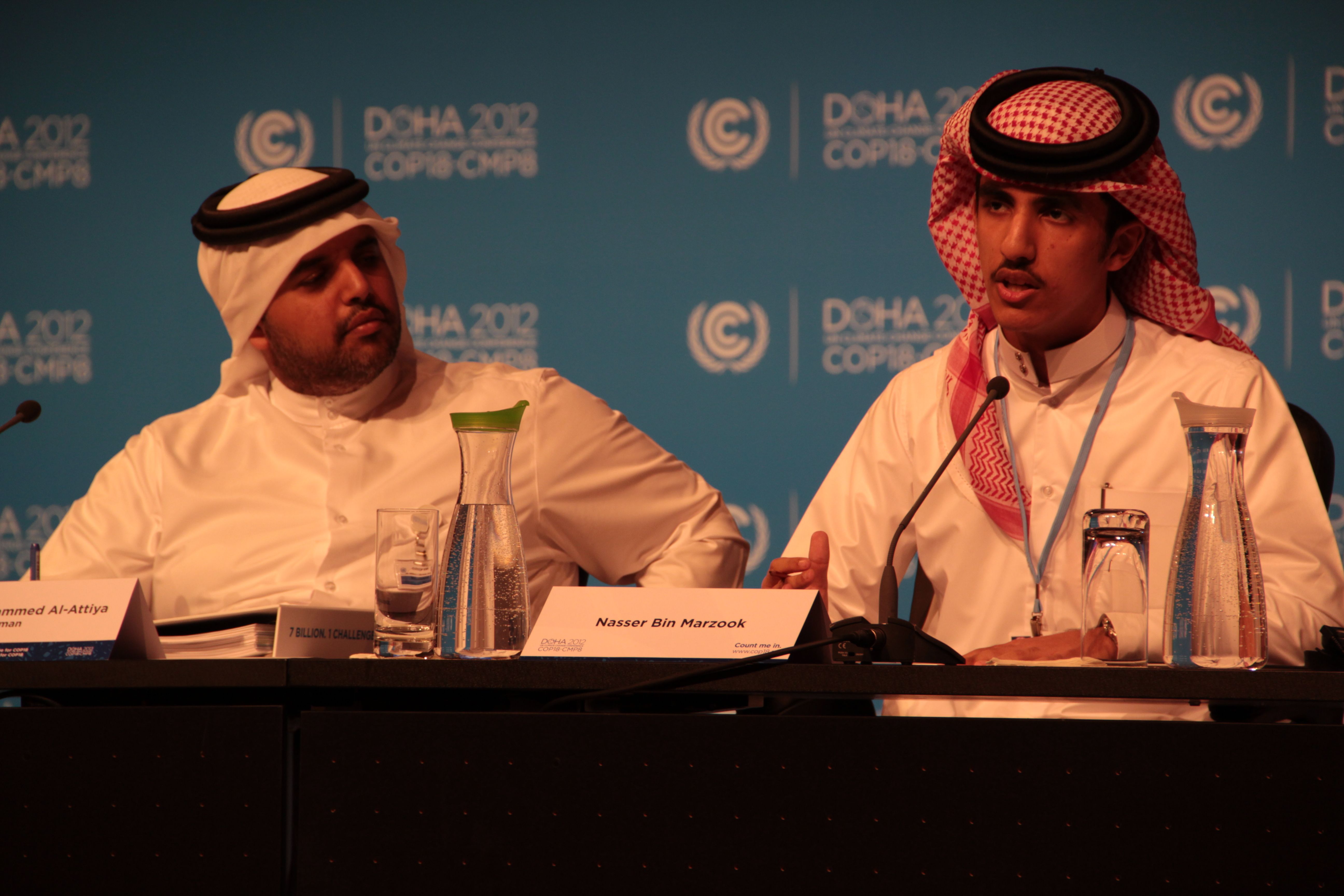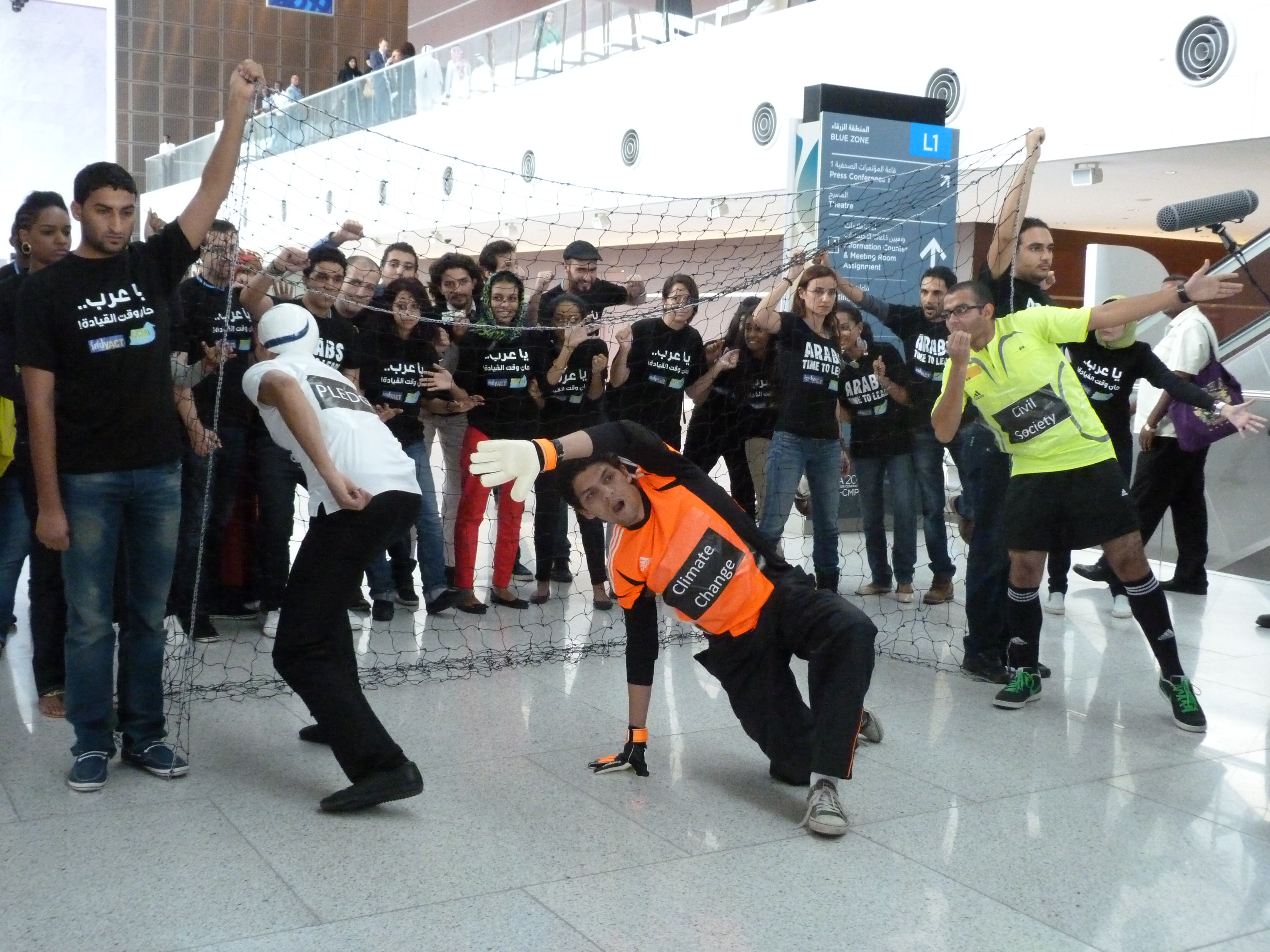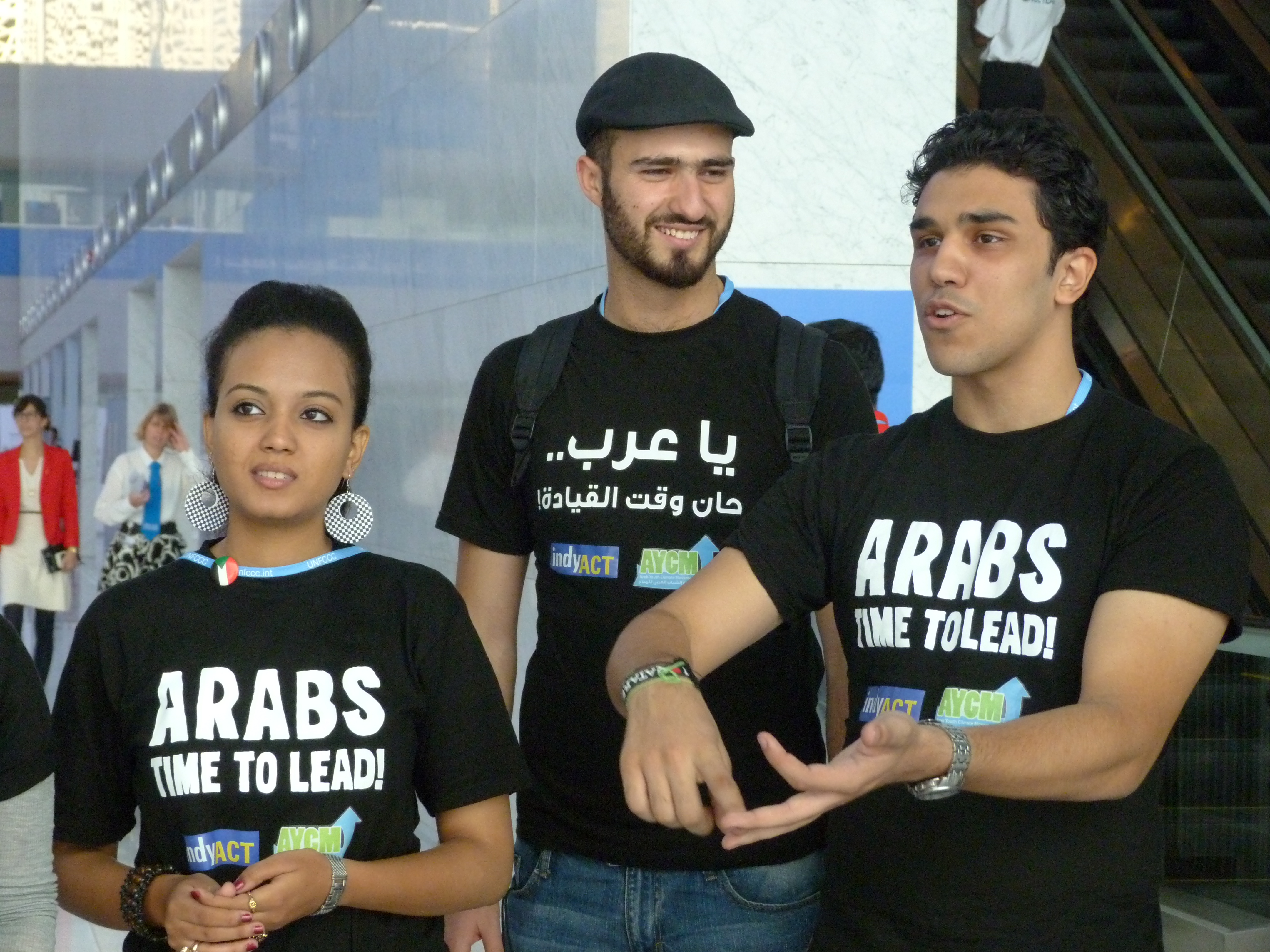Search Results for Tag: action
Taking action against climate change
The term ‘war room’ may conjure up images of leaders huddling over military strategy. But not all conflicts are fought on the battlefield. A corporate initiative called ‘Carbon War Room’ has declared war on climate change by pushing industries such as shipping to reduce emissions while at the same increasing earnings and production. Not convinced? Check out the video.
Bursting Bubbles of Hot Air
Authors: Kerstin Schnatz and Klaus Esterluss
Despite being in the middle of a desert, Doha’s newly built convention center is well chilled. But the uncountable air conditions at this year’s venue of the United Nations climate summit (COP18) did not cool the minds of climate activists this morning.
A coalition of Greenpeace, Carbon Market Watch and the WWF loudly drew the delegates’ attention towards tons of hot air – hot air that literally is hidden in the current Kyoto protocol. The Kyoto protocol puts a price on carbon emissions. It is the only legally binding trading scheme aimed at reducing CO2 emissions. But the first trading period is ending in just a few days from now, at the end of 2012.
Activists handed out symbolic carbon credits to delegates for two reasons:
1. To call for a second period of the Kyoto protocol
2. To pledge for a dumping of surplus carbon credits in this second phase
One carbon credit allows a state to emit the equivalent of one ton of CO2. The flaw is: In the current, first trading period of the Kyoto protocol, has created a bubble: Too many countries such as Russia, Ukraine, Poland or Japan, have collected a surplus of credits – a surplus they want to rescue over to the next, ongoing years. The equivalent of all credit savings in this “hot air bubble” is 13 billion tonns of CO2. That is almost three times of what the 27 EU-member states pump into the air each year. If the states do not drop their surplus credits and thus do not burst the bubble in a second phase of the Kyoto trading scheme, these 13 billion tons of CO2 could be emit for free into the world’s atmosphere.
To remind delegates of reducing their own country’s CO2 emissions, they were invited to dump their symbolic hot air credits in a bin before entering the conference halls.
Call for a second commitment period
According to WWF’s William McGoldrick it’s Europe who has to be a rolemodel in the negotiations at COP18. “At the moment, countries jump out of the protocol, but still hold on their hot air credits,” he frames the problem.
1:0 for Bottom Up versus Top Down
Text and fotos by Kerstin Schnatz from Doha, Qatar

Being a monarchy with no elected national parliament up to date, Qatar does not have a history of civil society movements. Despite this lack of democratic history, the emirate currently welcomes civil society delegates from around the world to the 18th United Nations Conference on Climate Change (COP18) – among them many young people. At Youth Day, youngsters from the Arab world demanded a stronger stance on tackling climate change – in very different ways.
Top down: Qatar’s youth ambassadors
„When I was 18 years old, there was only one flight out of London a week. Now there are seven.“ The Quatari Chairman of the Organizing Committee for COP18, his Excellency Fahad Bin Mohammed Al-Attiya, highlights new study opportunities for young Qataris – like the young Nasser Bin Marzook, sitting next to him on the panel. Nasser and his three fellow „youth ambassadors“, appointed by the government, look down into an almost deserted audience with a mixture of shyness and pride.

17 year old Nasser is still at school. During his exchange year in the USA, he learned about the problems of acid oceans as a result of CO2 emissions. As Qatar heavily depends on sea water for their freshwater supply coming from desalination plants, Nasser wants to spread the word about this problem in his own country. His fellow youth ambassador’s approach, 18-year old Mariam Al-Nesf, is a different one: „Here in Qatar we have no rainforest – but we have mangrove forests that we need to protect.“ Sahar Al Ansari, 18, a Freshman at Qatar University, visited a village entirely powered by solar energy in Brazil and wishes to bring renewable energies to his home country. In Qatar, electricity is still 100% derived from fossil fuels, despite the sun shining almost every day.
Each of the young ambassadors speaks for about one minute, their statements sound wooden, studied for a long time. Questions from the audience are answered by his Excellency first – afterwards the youngsters are invited to add an aftertought. When asked how exactly the Qatari government is hoping to cut down CO2 emissions he becomes evasive and hints to new research funds for climate change issues.
Bottom up: The Arab Youth Climate Movement
At the same time, downstairs, a joyful, colourfoul crowd of young people have come together for what looks like a soccer game. The Arab Youth Climate Movement (AYCM) is holding their own version of a press conference – a much noisier and more chaotic one. AYCM is the first climate movement the Arab world has seen in history. Hundreds of young activists from Qatar and other Arab countries have joined together in the forerun to COP 18.

Picture: Anne Allmeling (DW)
These young, energetic people also want to influence the climate negotiations – starting with the host nation Qatar: “Now that they have gotten the world’s attention by hosting this COP, they need to demonstrate that they are about more than beautiful venues and a wealthy gas exporting economy.” Ali Fakhry from IndyACT who helped launching AYCM says. It is a pity that the youth ambassadors appointed by the Qatari government can not hear this pledge. They are still inside the conference room taking a group picture with his Excellency.

Picture: Anne Allmeling (DW)
Climate March: On Saturday, December 1st, the AYCM organises an historic march for climate action in Doha. The Qatari government, who never in the country’s history allowed any similar kind of action before, expreses solidarity with the activists. GLOBAL IDEAS will be at the march to report for you.
Qatar’s new closeness to civil society: During COP18, the emirate is very eager to stress that it has learnt a lesson from COP18. Media events stating “Qatar’s Commitment to Civil Society Engagement on Climate Change Issues” – being the official title of one press conference – are held almost on a daily basis. The Sunday climate march will prove, how eager the Qatari government really is to support a critical civil society in their own country and the Arab region in general.
Follow our GLOBAL IDEAS Facebook page for recent updates from this year’s UN climate conference and the climate march this Saturday.
24 Hours of Reality
The Climate Reality Project, founded and chaired by former US Vice President Al Gore, will host a 24-hour event beginning on September 14 in what the organizers hope will mobilize the world to confront the reality of the climate crisis. 24 Hours of Reality will take place around the world from Pakistan to Cape Verde, and from Indonesia to Alaska.
“Extreme droughts, terrible storms, and larger floods are devastating many parts of the world,” said Gore. “Today, climate change is no longer a prediction: It’s a reality. Yet around the world, we are still subjected to polluter-financed misinformation and propaganda designed to mislead people about the dangers we face from the unfolding climate crisis.”
The former Vice President added: “The time to face reality is now. 24 Hours of Reality will bridge oceans and cultures — in every time zone — to bring the world together to emphasize the truth about the climate crisis and how we can solve it.”
24 Hours of Reality will be presented in 13 languages, with one presentation for each time zone. At 7 p.m. local time during each of the 24 Hours of Reality, a citizen activist will connect the dots between extreme weather and a warming climate, highlighting both the impacts of climate change and the inspiring solutions emerging in each time zone around the world. These local presentations will be interlaced with a studio presentation from New York City, featuring videos, live interviews and more.
The event will begin in Mexico City on September 14 at 7 p.m. Central Time, move westward around the globe, and conclude with a presentation in New York City by former Vice President Gore on September 15 at 7 p.m. Eastern Time.




Feedback